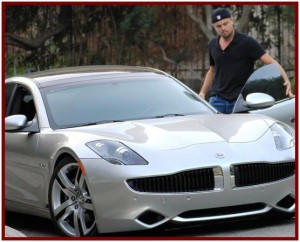
The Karma sedan had twice the economy (54 MPGe) and created about half the emissions (169g CO2/mi) compared to what Fisker said were competitive luxury cars. The startup just couldn’t sell many.
Fisker Automotive says that after 19 rounds of bidding the Chinese company Wanxiang is “the highest and best bidder” in an auction completed last Friday 14 February. The deal is subject to U.S. Bankruptcy Court approval in Delaware today with Judge Kevin Gross presiding. It includes the sale of Fisker’s Wilmington, Delaware plant.
Wanxiang should send a Valentine to U.S. taxpayers who have been bilked on this deal.
Wanxiang’s bid is valued at approximately $149.2 million, $126.2 millionin cash, $8 million of assumed liabilities, and a contribution of common equity in an affiliate of Wanxiang to acquire the assets of Fisker Automotive. It gets all the intellectual property rights that U.S. taxpayers funded to develop.
When Fisker declared bankruptcy, it tried to do a sweetheart deal with Hong Kong billionaire Richard Li, who was a Fisker investor. Other creditors objected -vehemently- since they faced total losses under the scheme, which was ultimately rejected in favor of an asset purchase agreement by Hybrid Tech Holdings for all of its assets. Hybrid was the lender of the $170 million loan. Hybrid’s parent, Hybrid Technology, LLC purchased this loan from the U.S. Department of Energy, which had committed $529 million to Fisker. Fisker took $192 million from taxpayers before DOE cut off the startup company for missing agreed deadlines, and then only recovered $53 million.
Delaware was the home state of Vice President Biden when the DOE loan was made to Henrik Fisker’s company. Fisker’s personal qualifications were all in the area of automotive design, and not in product development or electric vehicle technology or manufacturing. He was ultimately forced out of the company he founded.
This completely sorry story started in 2010 when DOE – as noted – awarded Fisker $529 million in loans as part of an effort to help the development of so-called advanced-technology vehicles. Part of the loan was for redeveloping a closed General Motors plant in Wilmington, Delaware to build a small electric car, code-named Nina, that has yet to appear. Promised were 2,000 autoworker jobs building 100,000 units per year at the empty 3.2 million square-foot General Motors factory. It was an ambitious business plan, if not a an impossible one.
Fisker said that about one-third of the total loan amount – $190 million – was drawn, mostly for Karma design and development – built overseas – before the DOE put a hold on the balance as Fisker failed to meet performance deadlines. DOE subsequently only recovered $53 million.
Wanxiang – the largest Chinese parts supplier – is working on a U.S. manufacturing base. Last year the U.S. government allowed it to acquire the assets of bankrupt A123 Systems, the comapny that made Fisker batteries. A123 was also partially funded by the U.S. under the guise that this was supporting clean fuels technologies.
Wanxiang outbid U.S.-based Johnson Controls for A123, and the Chinese company also overcame an intense lobbying effort to block it from obtaining technology developed with U.S. taxpayer money. The U.S. taxpayer lost that round too.
The bottom line – intellectual property in advanced electric vehicle technology and batteries was subsidized by U.S. taxpayers and then sold to a Chinese company at a loss.
Read AutoInformed on:
- Henrik Fisker Out at Fisker Automotive, the Firm He Co-Founded
- Fisker Recalls 2012 Model Karma Cars because of Fires
- Fisker Appoints New CEO – Tony Posawatz from GM’s Volt Program
- A123 Files Bankruptcy. Johnson Controls to Purchase its Auto Assets
- A123 Recalls Lithium Ion Batteries Shipped to Fisker, Others


Great write-up about the Fisker sale Ken. Not sure I see this as a negative though as Fisker will have a 2nd life and they will continue with production.
[The problem is there is no U.S. production. Taxpayers gave giant subsides to Fisker and A123 the battery supplier for development as outlined in our story. All that intellectual property is now sold to the the Chinese at bargain prices, with nothing in return. We will see how it plays out, but we are not optimistic. – editor]